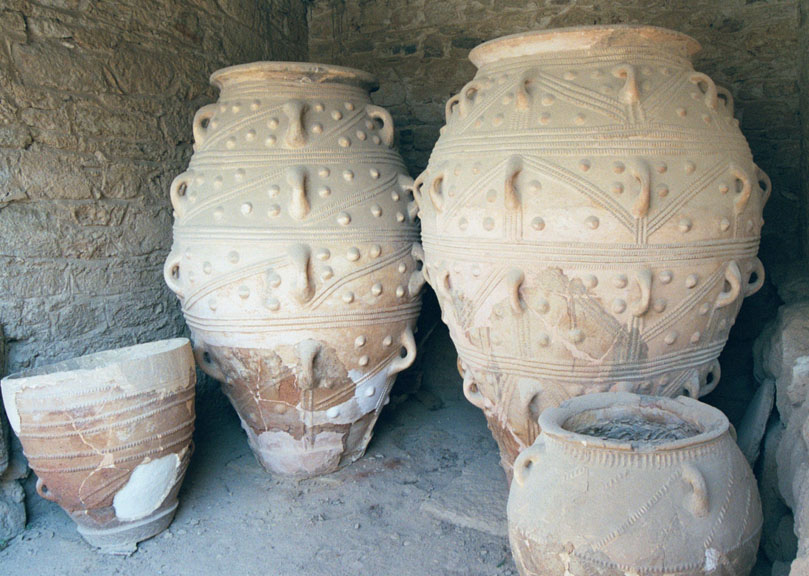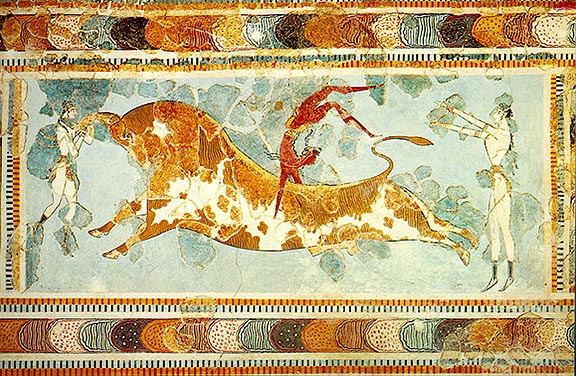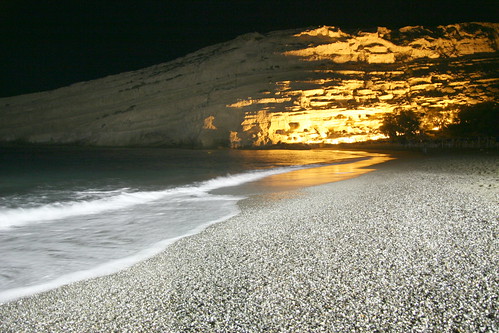From the first Cretan palaces in Knossos and Festus there are ony few ruins left of the palace built under the later, while palace in Malia, that was built later, preserved the simple lines of the earlier period. Moreover in the Knossos and Festus there were princely palaces and great cities: Hagia Triada in plain Mesara and Kanji. We can say with certainty that this settlement is the first major example of the actual architectural art, and not just an ordinary building techniques.
If we look at first the ruins in Malia which are characteristic of the first palaces of Crete, ie which is generally called "middle-minoan period". Fortification wall was built of finely carved stone blocks and showing your progress sags and bulges,which can still be seen primarily in the western part of the wall. From medieval courtyard, surrounded by colonnades on two sides, of which one enters the different chambers that are spread in a square. In Malia from the early period we can see the occurrence of structures with floors, especially over the western part of the palace, which were available via the large staircase in the middle courtyard, this is part of the palace that has certainly been changed in the future. The eastern part consists only of a simple single-storey warehouse, located between the courtyard and fence walls, that was made for bowls with the food supply. Hall which borders in the north with yard testifies the way of construction of the Egyptian influence on Crete. This hipostil (ie ceiling support columns) is here, though, made very clumsy, but this technique is later found in many shapes in Knossos.
Royal necropolis Krisolak has also discovered in Malia. Fence surrounding the palace, quite similar to the ones that surround huge tombs that show the same way of building as houses. Walls everywhere are made of lower quality building materials, but are always decorated with stucco. These architectural Gazette excavated in Malia showed that there were knowledge of metalworking already in middleminoan period. In workshop of bronze in the palace in Malia were found mold in which they poured various tools such as a two-edged axes, chisels and the similiar tools. In jewelry-making after that period is also noticeable improvement in the processing of metals. Some other pieces of jewelry have been spared from the devastation of the necropolis Krisolak. The stylized forms found indicates that people were more worried about the jewelry, but for the faithful representation. This proves that the Cretans knew very refined and very expressive and even the Syrian and Egyptian art of jewelry making. This love is characterized by the formation of the ceramics of the period. In Malia,there are generally a relatively simple geometric motifs and stylized plants and flowers in only three colors: red, white and black. It is a ceramic art of early minoan period that gave more primitive character.
If we cross to the study of so-called younger palace on Crete. ie, middle, or late minoan period that will take advances in ceramic technology. Villages in the vicinity of large palaces, especially in Knossos, show widespread use of fine ceramics. During the development of the highest authorities in the palaces it reaches a very high technical level: vases are becoming thinner and finally achieve the thickness of eggshell. The fact that the colors are preserved for millennia testifies to its full splendor of the high quality of materials used. Thus, an advanced technique leads to a large market and a high degree of specialization of artistic craftsmanship, in short to civilization at its peak. The transition from the old culture to newer corresponding to the development of the palace and the most important changes that were implemented continuously.









